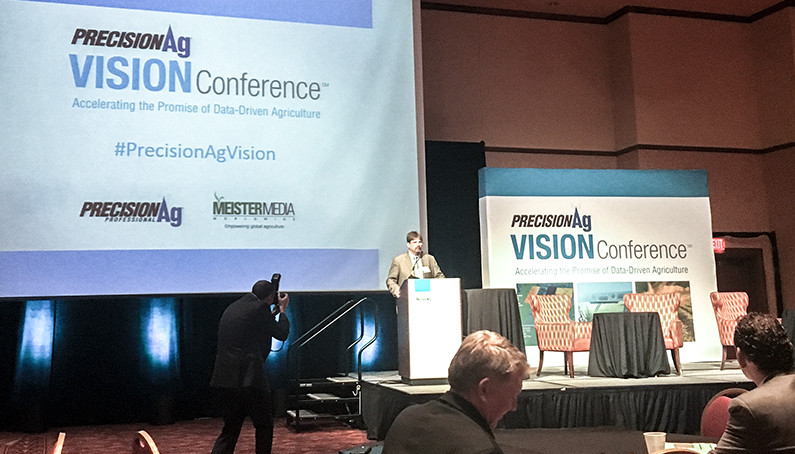Simplify the technical when marketing to farmers
As farmers face a boom of new technologies, marketers must find a way to keep the message simple and meaningful

I recently attended the PrecisionAg Vision Conference and spent three days desperately trying to keep pace with presenters much smarter than me. This conference focused on the many emerging trends and technologies around precision agriculture, with the many of the speakers actively involved in these advances. I boarded my return flight inspired, humbled and a little concerned.
I was inspired by the brilliant minds that focus on advancing production agriculture through the use of cutting-edge technology. Some of this technology is borrowed from other fields, and some is specific to our industry. I learned more about in-field sensors, complex cloud computing solutions, big data capture and manipulation and even how the Internet of Things is going to power it all. We all hear the stats about our growing planet and the need to produce more with less, and this group is tackling this challenge head-on.
I was humbled by the diversity of expertise and knowledge throughout the conference. People from various education and work backgrounds, from all over the world, united in a vision where these technologies will empower the next generation of farmers to be our most efficient yet. The creativity and focus of these experts came through with each slide shown and idea explained. I do not claim to have the technical knowledge or expertise to even fully understand some of these solutions, let alone create them from nothing. After all, I’m a marketing guy, which means I’m always thinking about what the solution will mean to a retailer or a farmer.
But it’s clear that our industry is in the early stages of a tech tsunami the likes of which we have never experienced. Which is why I left a little concerned. According to the 2012 Ag Census, the average U.S. farmer is 58 years old. And while these advancements hold tremendous promise, we must not forget that this level of disruption and change doesn’t come without its challenges. Fifty-eight years of experience and learned behavior is facing off against learning entirely new software platforms and hardware interfaces. And while we have seen farmers adapt to new technologies like variable rate application, autosteer, robotic milking, RFID tagging and data collection over the last two decades; it took time. These technologies also typically met some initial resistance and caused a few headaches early on.
So what does all of this mean for marketers in agriculture? It means that the real key to success will be in making it simple. While the tendency is to launch a tech product by focusing on the amazing tech itself (“our complex algorithms are better,” “our new MEMS sensors are 300 times more accurate,” etc.), real success will be found when we can show the problem it fixes in as simple terms as possible. “We enable you to reduce water usage without affecting yields” or “increase milk production while decreasing labor requirements at the same time.”
Think about the initial handheld computer space. The Newton was introduced in 1993, and it was followed by many other devices for several years. But it wasn’t until 2007 when Apple found a way to put it all in our cell phone (an existing behavior) and make it intuitive (tap the app) that the technology exploded. Apple focused on keeping not only the design and function simple, but the marketing message as well.
We need to search for the least disruptive way this tech can be incorporated into a farmer’s daily routine. But before that even happens, we need to frame the value or benefit of the technology in very clear terms. We need to challenge ourselves (and our clients) to seek simplicity in the coming months and years ahead as we help bring these solutions to market.

